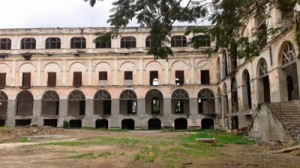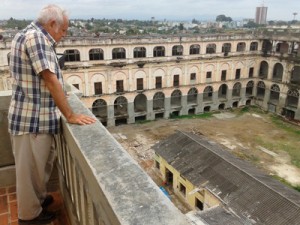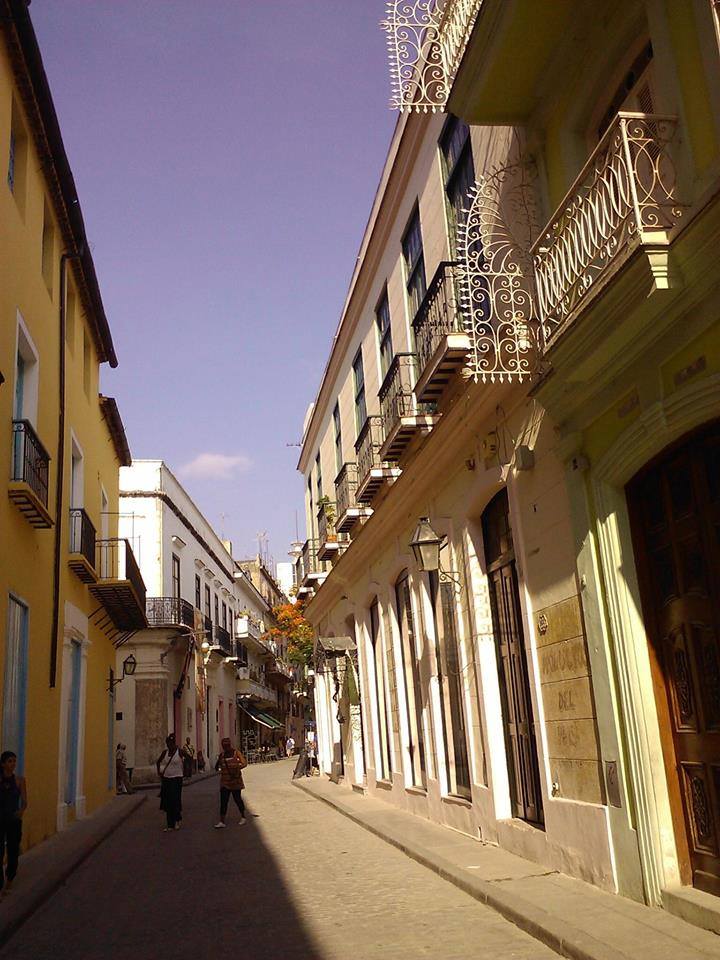GOBIERNO CUBANO DEVUELVE PROPIEDADES A LA IGLESIA CATÓLICA CUBANA.
La devolución de los bienes de las iglesias confiscadas por el gobierno cubano después del triunfo de la Revolución en 1959, es cada vez más un hecho.
“En este momento , la palabra correcta es ” proceso “, porque se trata de una iniciativa que comenzó hace unos años que no ha parado “, dice desde La Habana , Mons. . José Félix Pérez , secretario adjunto de la Conferencia de Obispos Católicos de Cuba .
“Con este paso podemos rehabilitar lugares para los servicios y la acción pastoral en las ciudades donde las comunidades religiosas tenían que reunirse en casas particulares o espacios incómodos “, dice el prelado. ” Por lo tanto , hemos llegado de nuevo capillas y templos en Santiago de Cuba , Bayamo , Camagüey y La Habana , además de Cienfuegos. ”
“En los últimos 50 años, la Iglesia Católica no ha tenido los recursos para construir nuevos templos y lugares de culto , así que saludar a esta decisión con mucha gratitud , porque es una forma de reconocer que la Iglesia tiene necesidad de estos sitios ( edificios y espacios ) y que , con esos actos , una mejor relación entre la Iglesia y el Estado está habilitado “, dice Pérez .
Padre Ignacio Cruz Magariño nació justo al otro lado de la calle del antiguo Colegio de los Padres Jesuitas , un edificio emblemático en la ciudad de Cienfuegos , a 240 kilómetros al sureste de La Habana.
Según él, aunque la escuela no funciona como tal desde 1940 , en 1961 se ” nacionalizó ” en virtud de una ley que hizo todos los centros de aprendizaje en las escuelas públicas de Cuba y se volvió sobre los edificios de la Consejería de Educación .
Como miembro de la Compañía de Jesús y el sacerdote asignado al templo, Ignacio participó en varias peticiones y conversaciones celebradas desde 1960. Las conversaciones llevaron a la readquisición de las partes del edificio hasta que la Iglesia recuperó totalmente en noviembre de 2013 .
“No hay ningún documento que acredite el volumen de negocios , pero ha sido eficaz , ya que, unas semanas más tarde , las oficinas y almacenes de las entidades estatales que ocupaban la planta baja fueron trasladados a otros sitios “, dice Cruz Magariño .
Algo similar ocurrió con la casa del párroco en la cercana Palmira , durante muchos años utilizado como biblioteca pública , y con las capillas en algunos ingenios azucareros , de acuerdo con el obispo de la Diócesis de Cienfuegos / Trinidad , Domingo Oropesa Lorente .

El antiguo colegio de los dominicos .
“Creo que son actos muy positivos por parte de las autoridades , y nosotros entendemos que con el tiempo todo lo que era parte del patrimonio de la Iglesia será devuelto . En Cienfuegos , también hay interés en regresar parte del antiguo colegio de los dominicos ” , dice el monseñor , que ve en la devolución de los bienes raíces un paso favorable , sobre todo para la sociedad.
” La catedral es de ninguna utilidad para mí solo. Es un espacio para las personas, que pueden vivir su fe allí. Así será con el colegio de los jesuitas. No va a ser sólo para los cuatro o cinco sacerdotes que viven en el interior “, dice .
Fuentes cercanas a las autoridades se mostraron renuentes a hablar sobre el tema , porque dicen que es un proceso aún no oficializada por una resolución judicial que sustituye a la anteriormente mencionada “ley de nacionalización “.
Off the record , las fuentes dijeron que la decisión beneficiará no sólo a la Iglesia católica, sino también otras instituciones religiosas que tenían propiedades y edificios en el momento de la Revolución.
Esa posibilidad no pudo ser confirmada por el Consejo de Iglesias de Cuba , una organización que incluye la mayoría de las congregaciones protestantes en el país.
Sin embargo, la escasa información disponible acerca de este proceso provoca expectativas moderadas en algunos miembros de las congregaciones afiliadas al Consejo , como la Iglesia Anglicana.
Halbert Pons, de la Iglesia Episcopal sacerdote en Santiago de Cuba , cree que será difícil para muchos de los edificios para ser devueltos porque están siendo utilizados como escuelas públicas.
Pero reconoce que hay un canal abierto de comunicación para obtener concesiones de tierras que anteriormente pertenecían a su iglesia que, por diversas razones, han sido utilizados por el Estado cubano en Sola , provincia de Camagüey, y Boquerón , provincia de Guantánamo.
En la Iglesia Católica , nadie puede arrojar mucha luz sobre el regreso de los sitios o la emisión de permisos de construcción de otras congregaciones religiosas. “Creo que algo está pasando , también, pero tengo poca información al respecto”, dice el secretario José Félix Pérez .
” Con nosotros, todo lo que ha ocurrido a través de las promesas verbales que luego se convierten en realidad en los municipios. Ellos nos dan garantías hablado de que vamos a ser capaces de utilizar de nuevo lo que una vez fue la nuestra ” , dice el sacerdote .
Con evidente entusiasmo , el padre Ignacio , un maestro artesano en la Compañía de Jesús , se ve en el bloque de la ciudad en la que espera para reconstruir . “Este fue un ‘ realengo ‘ [ tierra de propiedad estatal ] “, dice . ” Nos acaba de retirar más de 45 camiones de basura ya que por años la gente pensaba que esto era un basurero. ”
“Sabemos que pasarán muchos años antes de que podamos inaugurar la casa de la práctica espiritual que queremos “, dice el sacerdote . ” Vamos a tener que demoler algunas secciones , pero el edificio es salvable . A pesar del robo de vigas , baldosas y carpintería, las paredes son bastante fuertes. Ahora estamos estudiando el capital necesario , porque una restauración del millón de dólares no es algo que podemos hacer en un par de días . Además , ese tipo de dinero no estará disponible en algún momento ” .
“Lo pasado, pasado está “, dice el Padre Ignacio . ” El presente es alentador para todos. No sólo porque tenemos la oportunidad de cumplir nuestro sueño de ayudar a crear mentes y espiritualidad saludables , sino también porque la ciudad va a recuperar un edificio de gran valor ” .
Progreso Semanal / José J. Nieves Cárdenas / InternetPhotos / TheCUbanHistory.com
GOBIERNO CUBANO regresa Iglesia Católica cubana Propiedades .
La historia de Cuba , de Hollywood.
Arnoldo Varona , Editor
Progreso Weekly/José J. Nieves Cárdenas/InternetPhotos/TheCUbanHistory.com
CUBAN GOVERNMENT returns Cuban Catholic Church Properties.
THe Cuban History, Hollywood.
Arnoldo Varona, Editor
CUBAN GOVERNMENT returns Cuban Catholic Church Properties.
The return of property from the churches seized by the Cuban government after the triumph of the Revolution in 1959 is more and more a fact.
“At this time, the correct word is ‘process,’ because it is an initiative begun some years ago that has not stopped,” says from Havana Msgr. José Félix Pérez, associate secretary of the Conference of Catholic Bishops of Cuba.
“With this step we can rehabilitate places for services and pastoral action in cities where the religious communities had to meet in private homes or uncomfortable spaces,” the prelate says. “Thus, we have gotten back chapels and temples in Santiago de Cuba, Bayamo, Camagüey and Havana, in addition to Cienfuegos.”
“In the past 50 years, the Catholic Church has not had the wherewithal to build new temples and places of worship, so we greet this decision with much gratitude, because it is a way to recognize that the Church needs these sites (buildings and spaces) and that, with those acts, a better relationship between Church and State is enabled,” Pérez says.
Father Ignacio Cruz Magariño was born just across the street from the old College of the Jesuit Fathers, an iconic building in the city of Cienfuegos, 240 kilometers southeast of Havana.
According to him, although the school did not function as such since the 1940s, in 1961 it was “nationalized” by virtue of a law that made all learning centers in Cuba public schools and turned over the buildings to the Ministry of Education.
As a member of the Society of Jesus and the priest assigned to the temple, Ignacio participated in several requests and conversations held since the 1960s. The talks led to the reacquisition of parts of the building until the Church regained it fully in November 2013.
“There is no document that certifies the turnover, but it has been effective because, a few weeks later, the offices and warehouses of state-run entities that occupied the ground floor were moved to other sites,” Cruz Magariño says.
Something similar occurred with the home of the parish priest in nearby Palmira, for many years utilized as a public library, and with the chapels in some sugar mills, according to the bishop of the Diocese of Cienfuegos/Trinidad, Domingo Oropesa Lorente.

The old college of the Dominicans.
“I think that they are very positive acts on the part of the authorities, and we understand that in time everything that was part of the Church’s patrimony will be returned. In Cienfuegos, there is also interest in returning part of the old college of the Dominicans,” says the monsignor, who sees in the return of the real estate a favorable step, especially for society.
“The cathedral is of no use for me alone. It is a space for the people, who can live their faith there. So it will be with the college of the Jesuits. It won’t be just for the four or five priests who live inside,” he says.
Sources close to the authorities were reluctant to speak on the subject, because they say it’s a process still not made official by a legal ruling that replaces the abovementioned “law of nationalization.”
Off the record, the sources said that the decision will benefit not only the Catholic Church but also other religious institutions that owned property and buildings at the time of the Revolution.
That possibility could not be confirmed by the Council of Churches of Cuba, an organization that includes most of the Protestant congregations in the country.
Nevertheless, the scant information available about this process elicits moderate expectations in some members of congregations affiliated with the Council, such as the Anglican Church.
Halbert Pons, Episcopal Church priest in Santiago de Cuba, believes that it will be difficult for many of the buildings to be returned because they’re being used as public schools.
But he recognizes that there is an open channel of communications to obtain grants of land formerly owned by his church that, for various reasons, have been used by the Cuban State in Sola, Camagüey province, and Boquerón, Guantánamo province.
At the Catholic Church, no one can throw much light on the return of sites or the issuance of construction permits for other religious congregations. “I think something is going on, too, but I have little information about it,” says secretary José Félix Pérez.
“With us, everything has happened through verbal assurances that later become reality in the municipalities. They give us spoken guarantees that we’ll be able to use again what once was ours,” the priest says.
With obvious enthusiasm, Father Ignacio, a master craftsman in the Society of Jesus, looks at the city block on which he hopes to rebuild. “This was a ‘realengo’ [state-owned land],” he says. “We just removed more than 45 truckloads of garbage because for years people thought this was a dump.”
“We know that many years will pass before we can inaugurate the house of spiritual practice that we want,” the priest says. “We’ll have to demolish some sections but the building is salvageable. Despite the theft of beams, floor tiles and carpentry, the walls are quite strong. Now we’re looking into the needed capital, because a million-dollar restoration is not something we can do in a few days. Besides, that kind of money will not be available at one time.”
“What’s past is past,” Father Ignacio says. “The present is encouraging to all. Not only because we have an opportunity to fulfill our dream of helping create healthy minds and spirituality, but also because the city will regain a very valuable building.”
Progreso Weekly/José J. Nieves Cárdenas/InternetPhotos/TheCUbanHistory.com
CUBAN GOVERNMENT returns Cuban Catholic Church Properties.
THe Cuban History, Hollywood.
Arnoldo Varona, Editor





